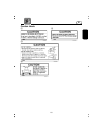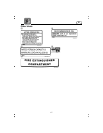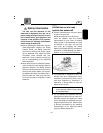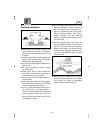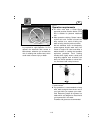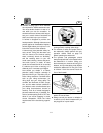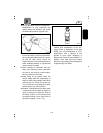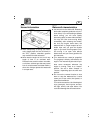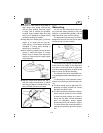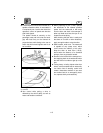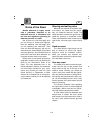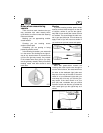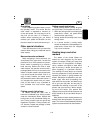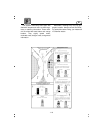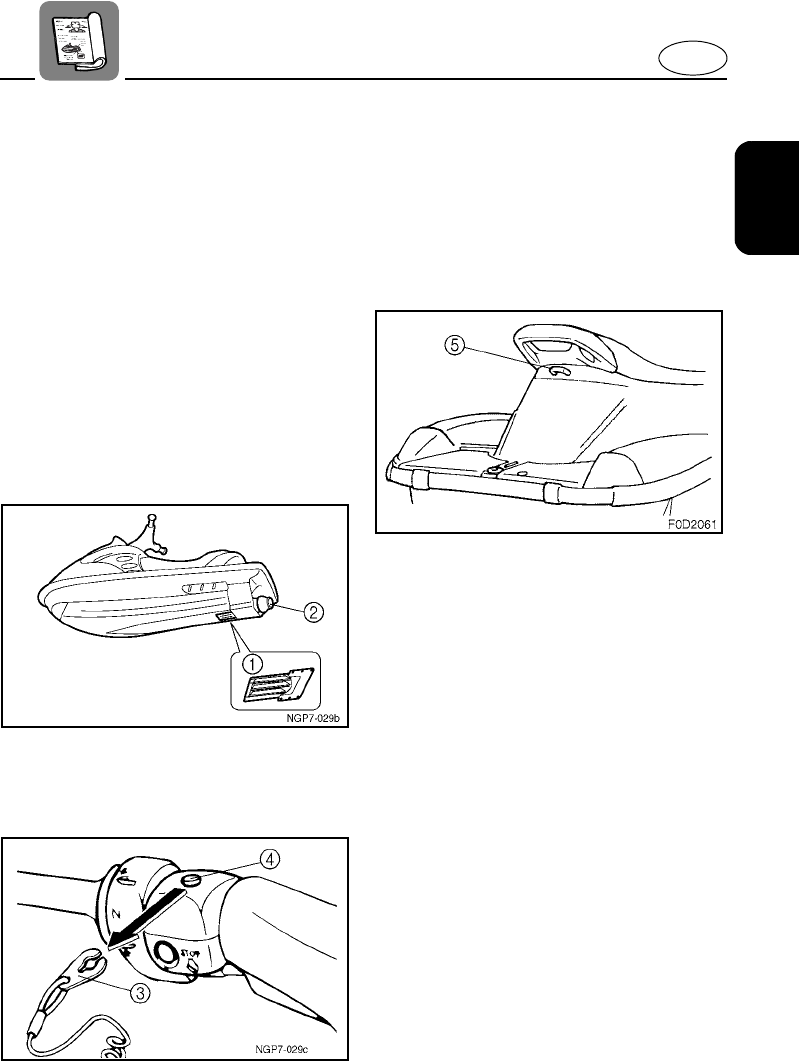
1-14
E
● Reverse can be used to slow down or
stop during slow speed maneuvering,
such as when docking. Once the engine
is idling, shift to reverse and gradually
increase engine speed. Make sure that
there are no obstacles or people behind
you before shifting into reverse.
● Keep away from intake grate 1 while the
engine is on. Items such as long hair,
loose clothing, or PFD straps can become
entangled in moving parts resulting in
severe injury or drowning.
● Never insert any object into the jet thrust
nozzle 2 while the engine is running.
Severe injury or death could result from
coming in contact with the rotating parts
of the jet pump.
● Stop the engine and remove the clip 3
from the engine shut-off switch 4 before
removing any debris or weeds, which may
have collected around the jet intake.
EJU00668a
Water-skiing
You can use the watercraft for water-ski-
ing if it has the seating capacity to carry the
operator, a rearward-facing spotter, and the
water-skier when he or she is not skiing.
The watercraft must also have a cleat 5
designed to pull a ski tow rope; do not attach
the tow rope to any other location.
It is the watercraft operator’s responsibility
to be alert to the safety of the water-skier
and others. Know and follow all state and
local water-skiing regulations in effect for the
waters in which you will be operating.
The operator should be comfortable car-
rying passengers before attempting to pull a
skier.
The following are some important consid-
erations for minimizing risks while water-ski-
ing.
● The skier should wear an approved PFD,
preferably a brightly colored one so boat
operators can see the skier.
● The skier should wear protective clothing.
Severe internal injuries can occur if water
is forced into body cavities as a result of
falling into the water. Normal swimwear
does not adequately protect against
forceful water entry into rectum or vagina.
The skier should wear a wetsuit bottom or
clothing that provides equivalent protec-
tion.



